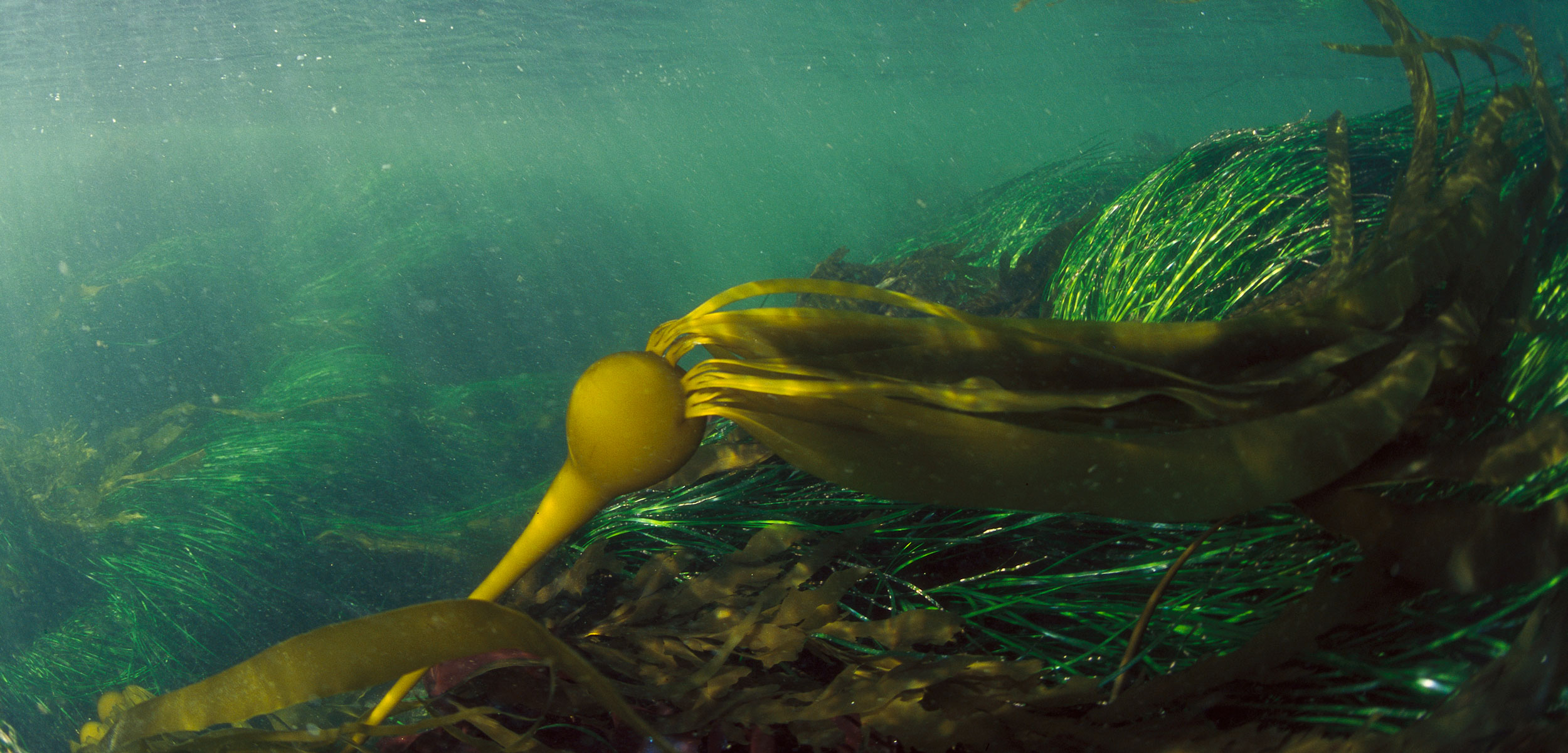Imploding Kelp
The answer to the pressing question of how low kelp can go.
Article body copy
What are the limitations on life? Why does one species live here but not there? Perhaps it’s a subtle shift in available light that makes photosynthesis too hard, or chilly temperatures that thin fur cannot combat. For bull kelp, a type of large brown algae that bobs in the water from California to Alaska, researchers may have pinned down one of the factors that limit where it will grow or at least how far down it can take root.
Bull kelp, held upright with a small float that can grow to the size of a fist, is almost never found in water more than about 35 meters deep. Now, Lauran Liggan, who is currently a Hakai Institute research technician*, can point to one reason why: if it grows any deeper, the gas-filled sack that keeps the kelp afloat will burst.
Liggan made the discovery during her graduate studies at the University of British Columbia after she built what she calls a kelp “torture basket”: a chicken wire cage with a pressure gauge, scuba weights, and a GoPro camera designed to test the physics of bull kelp floatation. In recent experiments, she zip tied kelp floats inside the cage, sank it in the ocean near Bamfield, British Columbia, and watched the carnage.
How much hydrostatic pressure can the floats of #BullKelp tolerate? How deep can they grow?@Martonelab @BamfieldMSC pic.twitter.com/ISd66EcFOk
— Lauran Liggan (@LauranLiggan) June 4, 2016
Though the video seems to show the kelp exploding, it’s actually imploding, Liggan says. “The kelp is buckling because the compressive forces are too large, and the float material can no longer tolerate it.”
Previously, researchers thought light was the only limiting factor on how far down the massive seaweed can grow. The torture basket neatly shows that kelp may run into other more pressing problems if it goes too deep.
Liggan also made another discovery about kelp float physics. By measuring the pressure inside the bull kelp’s float, she found that no matter the depth, and no matter where it is in it’s annual cycle, the pressure inside the float is always lower than its surroundings.
Patrick Martone, Liggan’s adviser and a botanist at the University of British Columbia who also collaborates with the Hakai Institute, says that by always keeping the pressure inside the float lower than its surroundings, it may be easier for the kelp to withstand the forces being exerted on it. In this way, the float only ever has to deal with force from one direction—outside—making adaptation to this highly variable environment a bit simpler. “If you can have it just always be under compression, then you can develop a tissue that’s specialized for that purpose,” he says.
Life isn’t easy 35 meters under the sea. As Liggan’s experiments show, kelp is tough. But if it gets in too deep, it can crack under the pressure.
*The Hakai Institute and Hakai Magazine are both part of the Tula Foundation. The magazine is editorially independent of the institute and foundation.

